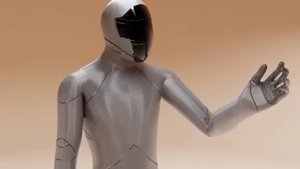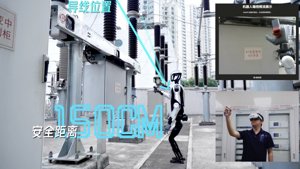In the grand theater of technological disruption, few rivalries are as entertaining—or as consequential—as the escalating cold war between Tesla and XPeng. What began as a skirmish in the electric vehicle market has now exploded into a multi-front battle for the future of mobility, automation, and artificial intelligence. Elon Musk pitches grand visions of infinite money and robot armies, while XPeng counters with eerily lifelike androids and imminent mass production. We’re not just watching a corporate chess match; we’re witnessing a high-stakes race to define the next era of robotics. So grab your popcorn, because the sparks are starting to fly.
The Humanoid Staredown
The latest exchange of fire began at Tesla’s 2025 Shareholder Meeting, where Elon Musk, fresh from securing a compensation package that could fund a small nation, waxed poetic about the forthcoming Optimus V3. As detailed in our coverage of Translation not available (en-us) , Musk envisions a future populated by billions of his humanoid robots, targeting a production cost of just $20,000 per unit. He even teased that the V3 hand will be “another level beyond” the already dexterous V2.
Not to be outdone, XPeng dropped a bombshell of its own. The company showcased its next-generation humanoid, dubbed IRON, with a gait so fluid and human-like that it triggered widespread disbelief online. The speculation grew so intense that XPeng’s CEO, He Xiaopeng, had to release videos showing the robot’s internal mechanics—and even had staff cut open its leg covering on stage—just to prove it wasn’t a person in a suit. In a direct counter to Musk’s ambitious timelines, XPeng announced it is on track for mass production of its humanoids by 2026.
This isn’t just about impressive demos. XPeng’s IRON is a sophisticated platform featuring a bionic “bone–muscle–skin” structure, 200 degrees of freedom, and a powerful AI “brain” running on the company’s proprietary Turing chips. While Musk sells a vision, XPeng is showcasing what it claims is a production-ready reality, a move clearly designed to position itself as the more grounded, and perhaps more imminent, player in the humanoid race.
A Battle on All Fronts: Roads, Skies, and Silicon
The rivalry extends far beyond bipedal robots. Both companies are now openly competing in the realms of autonomous vehicles and even urban air mobility. Shortly after Musk teased the idea of a Translation not available (en-us) , XPeng reminded the world that its flying car affiliate, HT Aero, has been developing road-capable flying vehicles for years, with plans for a mass-produced “Land Carrier” model in 2026.
Back on the ground, the robotaxi war is heating up. In a thinly veiled response to Tesla’s own autonomous ambitions, XPeng released a new video showcasing its Robotaxi progress. The company announced plans to launch three distinct, mass-produced robotaxi models in 2026, built from the ground up for driverless operation. These vehicles will be powered by four of XPeng’s Turing AI chips, delivering a massive 3,000 TOPS of computing power, and will not rely on high-definition maps—a significant strategic divergence from many competitors.
This multi-domain conflict—from humanoid factory workers to autonomous taxis and flying cars—reveals the true scope of both companies’ ambitions. They aren’t just car manufacturers anymore; they are positioning themselves as “global embodied intelligence” companies, as XPeng’s CEO puts it. The battle is no longer just for market share, but for defining the entire ecosystem of future intelligent mobility.
The Real Winner is… Robotics
While the corporate posturing and dueling announcements make for great headlines, the real beneficiary of this escalating rivalry is the field of robotics itself. The intense competition is forcing both Tesla and XPeng to accelerate R&D, push the boundaries of AI and mechatronics, and, most importantly, map out concrete paths to mass production. For years, the humanoid robot has been a tantalizing but distant dream, confined to research labs and carefully staged demos. Now, two of the world’s most ambitious tech companies are putting firm dates on its arrival.
Whether you’re rooting for Musk’s grand, top-down vision or XPeng’s aggressive, multi-pronged assault on the market, one thing is clear: the pressure is on. This rivalry is compressing development timelines and forcing a level of investment that will undoubtedly spill over into the broader robotics industry. The race to build the first true general-purpose robot is on, and for those of us watching from the sidelines, it’s the most exciting show in tech. The future is arriving faster than we thought, and it’s being forged in the crucible of this epic technological feud.






